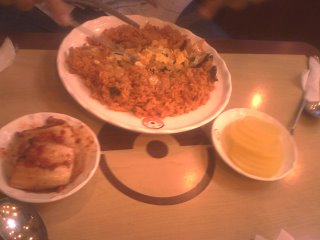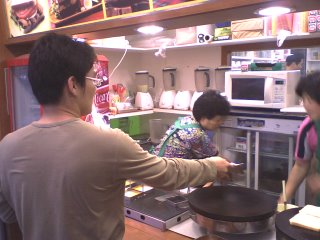
In Korea there are many social rules and they extend into many aspects of Korean
life. It is important to
familiarize yourself with many equtitue nuancies so that during your stay you can remain respectful to those around you.
What is abruptly apparent for
foreigners coming to
Korea is that eating isn't just a
necessity it's more of an event when shared with friends and family. There are many rules
pertaining to eating in Korea including table
manners, speaking, eating, passing and leaving. While there are enough "social rules" to fill a book I will layout some simple ground rules for eating in a tradional Korean restaurant or home.
(1) In
traditional Korean restaurants or when you are visiting a Korean family you will most
llikely be sitting on the floor, it is polite to remove your shoes at the entrance of the building then take your seat where directed.
(2) In many restaurants in Korea you will be provided with 2 utensils, a spoon and a pair of chopsticks, if you do not see any utensils at your place setting they are most
likely in a box to either end of the table (usually at inexpensive restaurants) or they will be given to you by your waiter or host; it is acceptable for you to retrieve them yourself in a cheaper restaurant.
(3) Many restaurants in Korea will serve many side dishes but you are not required to eat them all. It is polite to
at least "try" a bit of everything provided
especially if you are visiting someones home and they prepared the food themselves. If you run out of a side dish it is okay to ask for more, depending on the restaurant (In most Korean restaurants this is acceptable unless the side dish is expensive like prawns or certain types of fish). This means it is okay to take the last of

the
kim-chi or onion, but it is polite if you take the last
piece to ask for more.
(4) Speaking of
kim-chi, it is considered very important in
Korea and most restaurants will serve
kim-chi with the meal. There are many types of
kim-chi and it is easy to recognize. Kim-chi is
generally made from onions, cabbage,
bok-
choy, red pepper, garlic and a brine for more information on Kim-chi go
here. If you do not enjoy the taste of
kim-chi you may find that living in
Korea will be difficult for you because it is so pervasive in the Korean diet.
(5) It is
Generally not polite to start eating until the eldest person at the table has started, this is simply a sign of respect, in mixed company this rule can be overlooked but when eating with a family or a group from work it is usually observed.
(6) Rice (밥) Is served with most meals in Korea, you are usually given your own serving of rice in a small metal container. You are expected to finish all of it re
regardless of how hungry you are. This custom dates back to rice shortages in Korean history, it is considered wasteful not to finish you rice. This custom is overlooked for many forigners.
For more information on Korean food go here, for Korean restaurants in your area consult your local ye
llowpages or city directory.









